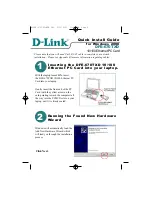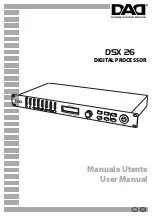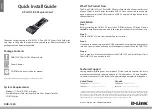
7
remove any routing/forwarding intelligence from the CPE. The associ-
ated Cisco configuration will set serial interface (s0) to accommodate
half bridging for the above example.
Authentication is optional under PPP. In a point-to-point leased-line
link, incoming customer facilities are usually fixed in nature, therefore
authentication is generally not required. If the foreign device requires
authentication via PAP or CHAP, the PPP software will respond with
default Peer-ID consisting of the units Ethernet MAC address and a
password which consists of the unit’s Ethernet MAC address.
Some networking systems do not define network numbers in pack-
ets sent out over a network. If a packet does not have a specific desti-
nation network number, a router will assume that the packet is set up
for the local segment and will not forward it to any other sub-network.
However, in cases where two devices need to communicate over the
wide-area, bridging can be used to transport non-routable protocols.
Figure 2 illustrates transparent bridging between two routers over
a serial interface (s0). Bridging will occur between the two Ethernet
Interfaces on Router A (e0 and e1) and the two Ethernet Interfaces on
Router B (e0 and e1).
3.1.1 Switch S2
The table below shows the default configurations for Switch S2. A
description of all S2 options follows this table.
Switches S2-1, S2-2, and S2-3
Use Switches S2-1, S2-2 and S2-3 to set the DTE data rate.
Each setting represents an nx56/nx64 setting. Individual channel set-
tings can be configured through the software control port.
S2-1
S2-2
S2-3
Speed
Off
Off
Off
Clear Channel (Unframed)
On
Off
Off
112kbps/128kbps
Off
On
Off
224kbps/256kbps
On
On
Off
336kbps/384kbps
Off
Off
On
448kbps/512kbps
On
Off
On
672kbps/768kbps
Off
On
On
896kbps/1024kbps
On
On
On
1344kbps/1536kbps
Switch S2-4: Line Framing and Coding
Use Switch S2-4 to control the Network Line Framing and Coding
Options. Set these options to be the same as the Line Framing and
Coding Options given to you by your Service Provider. If you are using
two Model 2720s together as short range modems, set both units iden-
tically.
S2-4
Line Framing & Coding
Off
ESF/B8ZS
On
D4/AMI
Line Framing Options:
D4/Superframe
: The D4 framing format, as specified in AT&T
TR62411 is the standard in which twelve frames make up a
superframe. All signaling and synchronization are done in-
band.
Extended Superframe (ESF)
: Extended Superframe, as speci-
fied in AT&T TR 54016, consists of twenty-four (24) T1
frames. The framing bits are now used for framing, CRC and
the Facility Data Link (FDL). The FDL allows maintenance
messages and information to be passed between the 2720
and the Central Office.
Line Coding Options:
Alternate Mark Inversion (AMI)
: This mode does not inherently
account for ones density. To meet this requirement, each time
slot can be reduced to 56 kbps and the Least Significant Bit
(LSB) of each time slot set to one.
Bipolar 8 Zero
Patton
2720
Bridge
Ethernet LAN
PEC Device w/ Serial I/F
Router
Figure 1.
Cisco router with serial interface, configured as PPP Half Bridge.
!
no ip routing
!
interface Ethernet0
ip address 1.1.1.1 255.255.255.0
bridge-group 1
!
interface Serial0
ip address 1.1.1.1 255.255.255.0
encapsulation PPP
bridge-group 1
!
interface Serial1
ip address 2.2.2.2 255.255.255.0
bridge-group 1
!
bridge 1 protocol ieee
!
Router A
Router B
e0
e0
S1
e1
S1
S0
S0
LAN
LAN
LAN
LAN
LAN
Serial Interface
Serial Interface
Using Bridge-Groups, multi-
ple remote LANs can be
bridged over the wide-area.
8
2720/I
2720/I
T1/FT1 Link
T1/FT1 Link
Figure 2. Transparent bridging between two routers over a serial interface.
Summary of Contents for 2720/I Series
Page 45: ......
Page 46: ......
Page 47: ......
Page 48: ...Copyright 2001 2007 Patton Electronics Company All Rights Reserved...










































